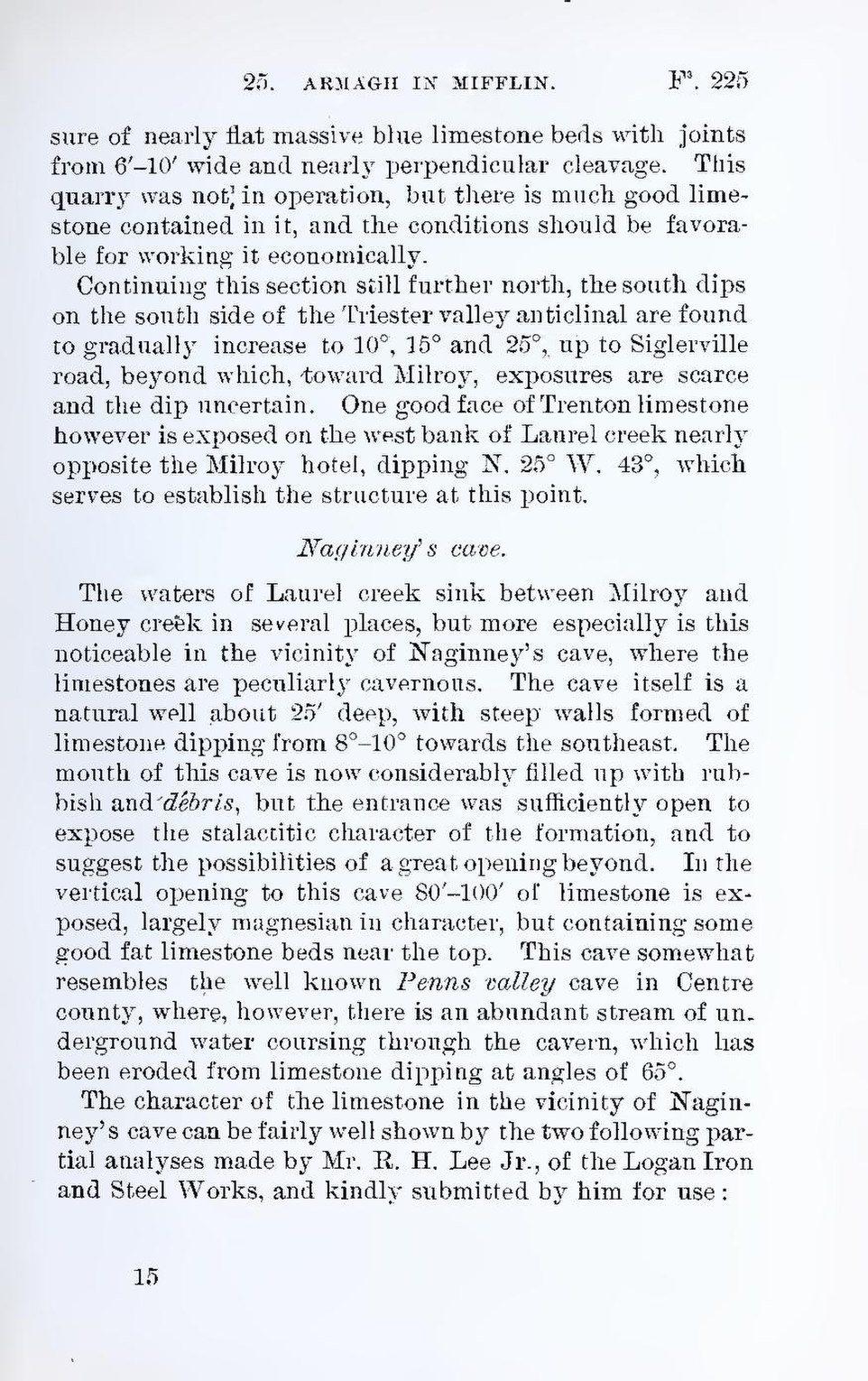sure of nearly flat massive blue limestone beds with joints from 6′–10′ wide and nearly perpendicular cleavage. This quarry was not in operation, but there is much good limestone contained in it, and the conditions should be favorable for working it economically.
Continuing this section still further north, the south dips on the south side of the Triester valley anticlinal are found to gradually increase to 10°, 15° and 25°, up to Siglerville road, beyond which, toward Milroy, exposures are scarce and the dip uncertain, One good face of Trenton limestone however is exposed on the west bank of Laurel creek nearly opposite the Milroy hotel, dipping N. 25° W. 43°, which serves to establish the structure at this point.
Naginney’s cave.
The waters of Laurel creek sink between Milroy and Honey creek in several places, but more especially is this noticeable in the vicinity of Naginney’s cave, where the limestones are peculiarly cavernous. The cave itself is a natural well about 25′ deep, with steep walls formed of limestone dipping from 8°–10° towards the southeast. The mouth of this cave is now considerably filled up with rubbish and débris, but the entrance was sufficiently open to expose the stalactitic character of the formation, and to suggest the possibilities of a great opening beyond. In the vertical opening to this cave 80′–100′ of limestone is exposed, largely magnesian in character, but containing some good fat limestone beds near the top. This cave somewhat resembles the well known Penns valley cave in Centre county, where, however, there is an abundant stream of underground water coursing through the cavern, which has been eroded from limestone dipping at angles of 65°.
The character of the limestone in the vicinity of Naginney’s cave can be fairly well shown by the two following partial analyses made by Mr. R. H. Lee Jr., of the Logan Iron and Steel Works, and kindly submitted by him for use:
